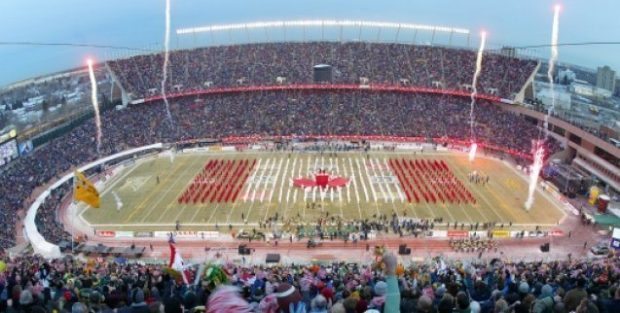The Canadian Football League’s offseason has a fan-friendly flow to it. Much like the elite American football leagues across Europe, the fans are hungry for content. The CFL does a more than acceptable job feeding that hunger.
Following the championship Grey Cup game in late November, the players and coaches take about 4-5 weeks off and then it’s back to the grind in the first weeks of the new year. The average CFL fan is getting prepared too and never quits.
Back to lifting weights and conditioning for the veteran players. In most cases it’s also back to the reality of a full-time off-season job or business opportunities, and familial responsibilities. It’s a highly competitive league and the work you put in during the off-season, could determine your ability to make a roster.
Draft eligible players are working hard with their agents and advisors, personal trainers, former schools, and current CFL players leading up to the 2015 National Scouting Combine. This is a culmination of earlier held regional events. Only the best and brightest prospects make it to Toronto.
A return to working on schemes, personnel, implementation, and philosophies for the coaching staff. All while balancing busy travel schedules, attending camps, various other scouting events, and their home lives. Making sure they have a few new wrinkles in the playbook is a high priority for coaches anywhere. This is particularly true in the nine-team CFL, where most teams have a fairly intimate knowledge of one another.
The general managers march to the beat of a different drum. They seem to be at work all year. Who can blame them in the CFL, a league that boasts a history high in parity? A competitive edge is sought. Tracking the draft in co-operation with their assistants, as well as communicating daily with their scouting streams takes much of their time.
So here it is. A breakdown of the CFL’s offseason calendar.
January: Signings. A handful or two of league veterans re-sign with their current clubs avoiding free-agency. The first of the free agent camps held in cities across the USA occur. Less than a handful of trades but a number of players could be released and/or retire.
February: More signings. February 10th marked the opening of the free agent window. Camps continue across America. Schedule released.
March: More signings, this time some early NFL cuts and American undrafted free agent’s. Regional scouting combines in Edmonton, Toronto, and Montreal determine which players move on to the National event held March 27-29th in Toronto.
April: Even more signings. The last of the free agent camps occur in the United States. The third and final edition of the central scouting bureau’s report is released. A handful of trades and players announcing their retirement from the game. This year, nine-year commissioner Mark Cohon steps down in April and a new commissioner will be appointed.
May: Signings of NFL cuts and UDFA’s continue. Players that live elsewhere in the offseason start to return to their teams to participate in community and team activities. An exact date for the CFL Draft has not been set but it is safe to say it will happen sometime in the first two weeks of May.
June: Training camps begin in early June with rookies and quarterbacks reporting one week prior to the rest of the veteran group. Pre-season games begin the second weekend of camp and each team plays two games prior to the season’s opening day in the last week of June.
As opening day draws close, some are getting anxious. The reality is, fans and clubs have been gearing up all winter. The nine clubs all hope that they prepared better than one another. These events will be broadcast on the top sports channel in Canada – TSN.

